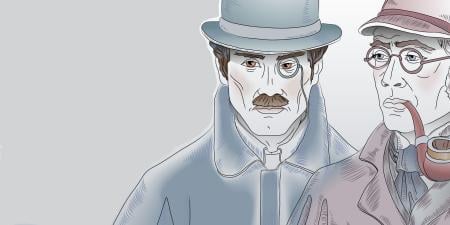In the matter of Daubert v Merrell Dow Pharmaceuticals the Supreme Court was asked to “determine the standard for admitting expert scientific testimony in a federal trial” [1]. Its decision in the case set standards that guide the admissibility of expert medical, as well as scientific, testimony.
The petitioners in the case, minors Jason Daubert and Eric Schuller and their parents, claimed that Bendectin, a drug taken during pregnancy to help alleviate nausea, resulted in serious birth defects for Jason and Eric [2]. During the trial, Bendectin’s manufacturer, Merrell Dow Pharmaceuticals, called in an expert who relied upon published studies and reports to support its claim that Bendectin did not cause the birth defects. To refute the testimony by Merrell’s witness, the petitioners called in 8 experts of their own who testified that Bendectin did cause the birth defects. These witnesses based their opinions on “animal studies, chemical structure analyses, and the unpublished ‘reanalysis’ of previously published human statistical studies” [2]. The trial court granted summary judgment to Merrell finding that the petitioners’ evidence did not meet the “general acceptance” standard needed for admissible expert testimony. After appeals to the district court of California and the ninth circuit court of appeals, the Supreme Court agreed to consider the expert testimony question.
Prior to the Daubert decision, most courts relied on the 1923 DC court of appeals decision in Frye v the United States when determining the admissibility of expert scientific testimony. The short and citation-free opinion said that, “while courts will go a long way in admitting expert testimony deduced from a well-recognized scientific principle or discovery, the thing from which the deduction is made must be sufficiently established to have gained acceptance” [3]. This meant that, to be admissible in court, theories put forth by experts during a trial must have attained general consensus in a particular field. Although the Frye decision had been applied with some inconsistency in the years preceding Daubert due to the passage of the Federal Rules of Evidence, it remained the most widely accepted precedent for determining the acceptability of expert testimony [4].
The petitioners in the Daubert case sought to challenge the Frye opinion by taking the position that the Federal Rules of Evidence (“Rules”) were more applicable than the Frye opinion. The Rules had been established by Congress in 1975 “to secure fairness in administration, elimination of unjustifiable expense and delay, and promotion of growth and development of the law of evidence to the end that the truth may be ascertained and proceedings justly determined” [5].
The Supreme Court agreed with the petitioners. Writing the unanimous opinion for the Court (although there were 2 partial dissenters), Justice Blackmun explained the role of 2 key rules from the legislation. He first addressed Rule 402 that states, “evidence which is not relevant is not admissible" [6]. Relying on an interpretation of both Rule 402 and Rule 401 Blackmun concluded that the Rules’ standard for determining relevance was liberal [7]; relevant evidence was defined broadly as “that which has ‘any tendency to make the existence of any fact that is of consequence to the determination of the action more probable or less probable than it would without the evidence'” [7].
Having established the basis for relevancy, Blackmun then turned his attention to reliability and Rule 702, which says that, “a witness qualified as an expert by knowledge, skill, experience, training, or education, may testify thereto in the form of an opinion or otherwise” [8]. In his reflection on Rule 702 Blackmun noted that “nothing in the text of this Rule establishes ‘general acceptance’ as an absolute prerequisite” [7] and further, that “a rigid ‘general acceptance’ requirement would be at odds with the ‘liberal thrust’ of the Federal Rules” [9]. Following this line of thinking, Blackmun ultimately concluded that, an “austere standard [ie, general acceptance] absent from, and incompatible with, the Federal Rules of Evidence, should not be applied in Federal trials” [9].
Having decided to use the Rules as the definitive standard for expert medical or scientific testimony, the Court understood that it then needed to provide some general guidelines to help judges determine the relevance and reliability of future expert testimony. When discussing relevance, Blackmun recommended that the judge be able to answer the question, how does this testimony help the jury resolve the case? As Blackmun parenthetically notes, “…another aspect of relevancy—is whether expert testimony proffered in the case is sufficiently tied to the facts of the case that it will aid the jury in resolving a factual dispute” [10].
Blackmun also addresses reliability. Here he encouraged judges to understand the scope of Rule 702 because, even though the rules are liberal, they are not without structure or limitations. “In order to qualify as ‘scientific knowledge’ an inference or assertion must be derived by the scientific method…the requirement that an expert’s testimony pertain to ‘scientific knowledge’ establishes a standard of evidentiary reliability” [11]. Blackmun also expressed his confidence in the judiciary’s ability to determine a standard of “evidentiary reliability,” writing, “We are confident that federal judges possess the capacity to undertake this review. Many factors will bear on the inquiry, and we do not presume to set out a definitive checklist or test” [10].
Besides offering general suggestions, the Court offered 4 concrete questions to be kept in mind when determining the reliability of expert testimony [12].
- Can the idea or theory be tested via the scientific method?
- Has the theory been peer-reviewed? The court recognized, however, that this is only one component of a greater assessment and wrote that this standard “does not correlate with reliability…but submission to the scrutiny of the scientific community is a component of ‘good science’” [13].
- What is the rate of error? This can give clues as to how the experimental standards are controlled.
- Is there general acceptance? Although the court rejected this as the “gold standard” it did acknowledge that this may be one useful factor when making an overall determination.
The Court specifically noted that these suggestions were not meant to be viewed as a definitive list of elements that make up admissible expert testimony. Rather, Blackmun wrote, “the focus, of course must be solely on principles and methodology, not on the conclusions that they generate” [13].
Despite the presence of both broad and specific guidelines, the Court foresaw that reliance on the Rules might not adequately resolve all of the scenarios that could arise when judges are making decisions regarding expertise in fields that they are unlikely to be experts in themselves. In an effort to proactively address these questions the Court suggested the following remedies in cases where questionable testimony is allowed:
- “Vigorous cross-examination, presentation of contrary evidence, and careful instruction on the burden of proof” [14].
- Exercise the option of a directed verdict. That is, if the evidence is so overwhelming that no reasonable jury could possibly find differently the court can impose the judgment.
Satisfied with the new precedent established in the Daubert opinion, Blackmun concluded that “these conventional devices, rather than wholesale exclusion under an uncompromising ‘general acceptance’ test, are the appropriate safeguards where the basis of scientific testimony meets the standards of Rule 702” [14].
This case is particularly important for physicians involved in expert medical testimony. Physicians who provide this type of testimony must ensure that the articles and studies they are relying upon are sound, especially in methodology. For physicians testifying about their own work, conclusions and methodologies must be scrupulously documented and interpreted so that their reliability and relevance can be demonstrated in court.
The American Medical Association’s Code of Medical Ethics believes that a physician “has an ethical obligation to assist in the administration of justice” [15]. But this obligation must not be erroneously fulfilled, meaning that physicians must have expertise in the area about which they are testifying and must not go beyond the scope of that expertise; they must inform the lawyer for whom they are testifying of any potential unfavorable information they have discovered; and should not accept compensation that is “contingent upon the outcome of litigation” [15]. Physicians hold an unusual position as actors in a trial—they are often not trained in law, they do not have a financial stake in the outcome of a case, and they are specially trained in a field that is foreign to most of the other participants in a case. As a result, physicians need to maintain high ethical standards and must not take advantage of this unique position.
The decision in Daubert is groundbreaking because it allows the more generous Federal Rules of Evidence standard and not the rigid “general acceptance” principle of the Frye decision to be used when determining expert testimony. As a result, the admissibility of this type of testimony is more flexible and largely left to the discretion of a well-guided judge. It was the hope of the court that all relevant evidence could be used to help resolve cases without imposing new obstacles within the legal system.
References
-
Daubert v Merrell Dow Pharmaceuticals, Inc., 509 US 579; 113 S.Ct. 2786 (1993): 3.
-
Daubert, 1.
-
Frye v United States, 293 F. 1013 (DC Cir. 1923).
-
Daubert, 5.
-
Wikipedia. Federal Rules of Evidence. Wikipedia, the Free Encyclopedia. Available at: http://en.wikipedia.org/wiki/Federal_Rules_of_Evidence. Accessed January 25, 2006.
-
Federal Rules of Evidence. Rule 402: relevant evidence generally admissible; irrelevant evidence inadmissible. Available at: http://www.cornell.edu/rules/fre/rules. Accessed January 12, 2006.
-
Daubert, 7.
-
Federal Rules of Evidence. Rule 702: testimony by experts. Available at: http://www.law.cornell.edu/rules/fre/rules. Accessed January 25, 2006.
-
Daubert, 8.
-
Daubert, 10.
-
Daubert, 9.
-
Daubert, 11-12.
-
Daubert, 11.
-
Daubert, 12.
-
American Medical Association. Opinion 9.07 Medical testimony. Code of Medical Ethics. Available at: http://www.ama-assn.org/apps/pf_new/pf_online?f_n=resultLink&doc=policyfiles/HnE/E-9.07.HTM&s_t=9.07&catg=AMA/HnE&catg=AMA/BnGnC&catg=AMA/DIR&nth=1&st_p=0&nth=1&. Accessed January 25, 2006.



